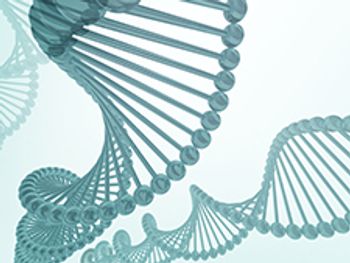
- BioPharm International-09-01-2018
- Volume 31
- Issue 9
Patenting Antibodies in Europe
Although there are some similarities between the way that US and European authorities uphold antibody patents, there are also some important differences.
Throughout the world, one key principle underpinning intellectual property (IP) protection is that the scope of protection should depend on how effectively the technology contributes to existing knowledge in the field. Although they are guided by this principle, different jurisdictions may apply it differently, resulting in differences in practice between different locations and technical areas.This article focuses on the European Patent Office’s (EPO) approach to antibodies, including such variations as single-chain variable fragments (scFvs) and single-domain antibodies.
Generally, an antibody must be novel, inventive, and reproducible by a skilled person in order to be considered patentable by the EPO. Patent applicants should keep in mind that novelty and inventiveness can stem from the target, structure, or function of the antibody.
Typically, in order to qualify for inventiveness, the technology must convey some advantage associated with the target, structure, or function of the antibody that would not have been obvious from what is already known. For example, the antibody could bind a particular epitope of the target; its structure might give rise to high affinity or other advantages; or the antibody’s function (e.g., its ability to block a particular receptor) might be particularly beneficial. The following are a number of ways to define an antibody in the claims.
Antigen or epitope specificity
At the EPO, if an applicant has identified a new antigen, antibodies to that antigen often may also be entitled to protection, with the caveat that the activity of the antigen must be known so that the invention has industrial utility. In this case, a claim to “An antibody that binds to antigen X” may be allowed by the EPO. This means that protection is awarded to the patent applicant for all antibodies that bind to antigen X.
If the antigen is novel and not structurally too close to any known antigens, then the EPO has also been known to allow claims such as “An antibody that binds an antigen which has a sequence that is 95% identical to peptide Z.” This affords broader protection, which extends to antibodies that bind to related antigens.
It may even be possible to craft a broad claim to an antibody against an antigen when the antigen and antibodies against the antigen are already known. A claim that requires the antibody to “specifically bind” to antigen X, for example, can distinguish over an antibody to antigen X that also binds to antigen Y, because the EPO considers that “specifically binding” excludes binding to other targets. Of course, the applicant would need to demonstrate that such an antibody was not obvious over the known antibody.
Similar rules apply when the antibody is defined by the particular epitope to which it binds. For example, if an antibody that binds to antigen X is known, the EPO may allow a claim to an antibody that binds a specific epitope of antigen X, if it can be shown that this epitope is not bound by the known antibody. The onus is on the patent applicant, however, to demonstrate this.
The epitope may be described in the claim as linear or non-linear. The following are some examples showing how this might be worded:
- “An antibody that specifically binds to antigen X, wherein the epitope comprises amino acid residues 20-28 of SEQ ID NO. 1”
- “An antibody that specifically binds to antigen Z, wherein the epitope comprises amino acid residues 3-15 and 50-58 within SEQ ID NO. 2”
It can be considered an undue burden to find additional antibodies that bind to the same epitope as the exemplified antibody. However, if at least one antibody that binds to the epitope is disclosed and the epitope has been characterized, then the applicant should be in a strong position to rebut such an objection.
Structural features
An antibody can also be defined in the patent claims by its structural features. Several levels of structural definition are possible. For example, in case of a conventional antibody, the antibody can be defined by complementarity determined regions (CDRs), which determine binding; by its light and heavy variable regions; or by its entire antibody sequence.
Of course, claiming the exact structure of an antibody that has been described in a patent application is not typically valuable, at least not commercially, so it is important to understand what level of structural definition the EPO will require; for example: “Antibody comprising a heavy chain variable domain having SEQ ID NO: 1 and a light chain variable domain having SEQ ID NO: 2”
If the inventiveness of the antibody is based solely on the antibody having a higher binding affinity to the antigen than other known antibodies, the EPO may require the heavy and light variable domains to be specified in the claim because it recognizes that the choice of framework region residues can influence the antibody’s final affinity. Consider the following example:
“Antibody comprising a heavy chain CDR1, CDR2, and CDR3 of SEQ ID NO: 5, 7, and 9, respectively, and a light chain CDR1, CDR2, and CDR3 of SEQ ID NO: 10, 11, and 12, respectively, wherein the CDRs are identified by Kabat numbering.”
As a rule, the EPO requires all six CDRs in the claim. An exception might be if it can be shown, for example by structural data, that only particular CDRs are involved in antigen binding. In this case, a claim that only states the sequences of those CDRs may be acceptable.
Bear in mind that, even when an antibody is described by its structural features, which are different from those of any known antibody, it may not be considered to be inventive. This is because the EPO considers it to be a matter of routine to prepare a polyclonal or monoclonal antibody (mAb) against any known antigen.
Therefore, an antibody is considered inventive by the EPO only if it is unexpected that the antibody could be produced at all (e.g., if there are difficulties with isolation), or if the claimed antibody has unexpected, advantageous properties such as higher binding affinity; an unexpected antagonistic or agonistic effect; low cross-reactivity; or differential binding to monomer vs dimer. It is also worth noting that the EPO does not consider lower immunogenicity or maintenance of affinity of humanized antibodies to be an unexpected property.
The unexpected, advantageous property can depend on what is already known. For example, if a murine antibody was already known, then a claim to a humanized antibody would not be inventive because the EPO now considers it to be routine to prepare a humanized mAb. On the other hand, if a patent application claims human anti-A antibody which is unexpectedly better than another human or mouse antibody to target A, the claimed antibody claim is likely to be considered inventive by the EPO.
Considering another scenario, in which binding to a particular “domain 2” of a target is known to be antagonistic but binding to “domain 1” or “domain 3” of that target antigen is thought to have an agonistic effect, it might be possible to demonstrate an inventive step if a patent application shows that the claimed antibody has an antagonistic effect when binding to domains 1 and 3. Of course, the reliance on the demonstration of an unexpected property for an antibody to be inventive means that data showing this unexpected property can be key to obtaining a granted patent at the EPO.
Functional features
If an antibody has an unexpected, advantageous property, it can even be beneficial to include that property as a functional feature of the antibody in the claim. Defining an antibody functionally can help to achieve a better breadth and scope of protection, as it puts the patent applicant in a strong position for arguing for a broader structural definition of the antibody in the claim. Therefore, in practice, antibody claims at the EPO often contain both structural and functional features to provide some flexibility on the structures or sequences required by the claim. Examples of these claims include:
- “Antibody comprising a heavy chain CDR3 of SEQ ID NO: 10, and a light chain CDR3 of SEQ ID NO: 12, wherein the antibody binds to a monomer of antigen X with a binding affinity of Y and binds to a dimer of antigen X with a binding affinity of Z measured under conditions A, B and C.”
- “Antibody comprising a VH that is at least 90% identical to SEQ ID NO: 2 and a VL that is at least 90% identical to SEQ ID NO: 19, wherein the antibody induces apoptosis of a cell upon binding to receptor X.”
The question then asked by the EPO is whether the patent application enables the skilled person to isolate an antibody having the functional feature without “an undue burden.” This requires that the functional feature be both clear and testable. For example, if an antibody is defined by its binding affinity, the conditions under which the binding affinity measurements have been performed should be provided in the patent application (and ideally in the claims). Including a therapeutic effect as a functional limitation can also be a successful strategy for achieving favorable reconsideration of a claim that has been rejected. In this case, there should be supporting data to show the therapeutic effect, for example, in a cell line. Another way to define an antibody functionally is to describe the antibody as competing with another antibody, for example: “A monoclonal antibody that competes with monoclonal antibody Y for binding to antigen X.”
Whether the EPO allows such a claim again depends on what the patent applicant has contributed compared with what is already known. So, for the previous example, if the antibody Y is already known, then the EPO will consider an antibody that competes with this antibody to lack novelty and inventiveness.
However, if antibody Y is considered to be novel and inventive, the EPO is more likely to grant a claim to the competing antibody, especially if it has the same inventive functional features as the reference antibody. These functional features may even be included in the claim.
The EPO’s attempts to keep the scope of protection awarded to patent owners commensurate with the technical contribution provided by the patent have resulted in specific requirements for patentability in the field of antibodies. With an understanding of the balance that the EPO is attempting to strike and experience of the EPO’s approach and practice in this area, innovators can craft claims that are commercially attractive and reflect their technical contribution.
In the United States, the balance currently seems to be tilting against innovators in the field of antibodies. Recent decisions and guidance from the United States Patent and Trademark Office (USPTO) take a strict approach to the written description requirement of US patent law, which could lead to claims of much narrower scope. In a recent decision (Amgen v. Sanofi, 872 F.3d 1367, Fed. Cir. 2017), a claim covering a genus of binding to specific residues on PCSK9 and blocking it from binding to LDL-R was considered not to comply with the written description requirement even though the patent tested several antibodies for the functional properties included in the claim, and disclosed the structures of several relevant antibodies.
This decision held that protection could not be afforded, even though the patent involved a newly characterized antigen and a functional genus claim, where it would have been considered routine to identify relevant antibodies. Any resulting change in the USPTO’s examination approach appears to diverge from the EPO’s approach.
Article Details
BioPharm International
Vol. 31, No. 9
September 2018
Pages: 44, 48, 50
Citation
When referring to this article, please cite it as M. Rai and J. Redhouse, “Patenting Antibodies in Europe,” BioPharm International 31 (9) 2018.
About the Authors
Monika Rai is a partner at Mathys & Squire LLP, mrai@mathys-squire.com. Her practice focuses on proceedings at the European Patent Office in the field of diagnostics, biopharmaceuticals and biologics and advising on IP due diligence projects. Juliet Redhouse is a managing associate at Mathys & Squire LLP. She handles a wide range of subject matter in the fields of molecular biology, pharmaceuticals, and biotechnology and has particular experience in the areas of antibody technology, vaccine technology, protein- and peptide-based medicines, recombinant gene expression, diagnostic assays, and medical devices.
Articles in this issue
over 7 years ago
FDA Seeks to Enhance Manufacturing of Cell and Gene Therapiesover 7 years ago
Lightweight Actuator for Aseptic Valvesover 7 years ago
Be a Part of the Solutionover 7 years ago
Evaluating the Rewards vs. the Risks of Automationover 7 years ago
Checking Incoming Goodsover 7 years ago
Biopharma Demand Continues to Influence CMO Actionsover 7 years ago
QbD in the Development of ADCs with PBD Dimer Warheadsover 7 years ago
Elements in Raw Materials May Impact Product QualityNewsletter
Stay at the forefront of biopharmaceutical innovation—subscribe to BioPharm International for expert insights on drug development, manufacturing, compliance, and more.




